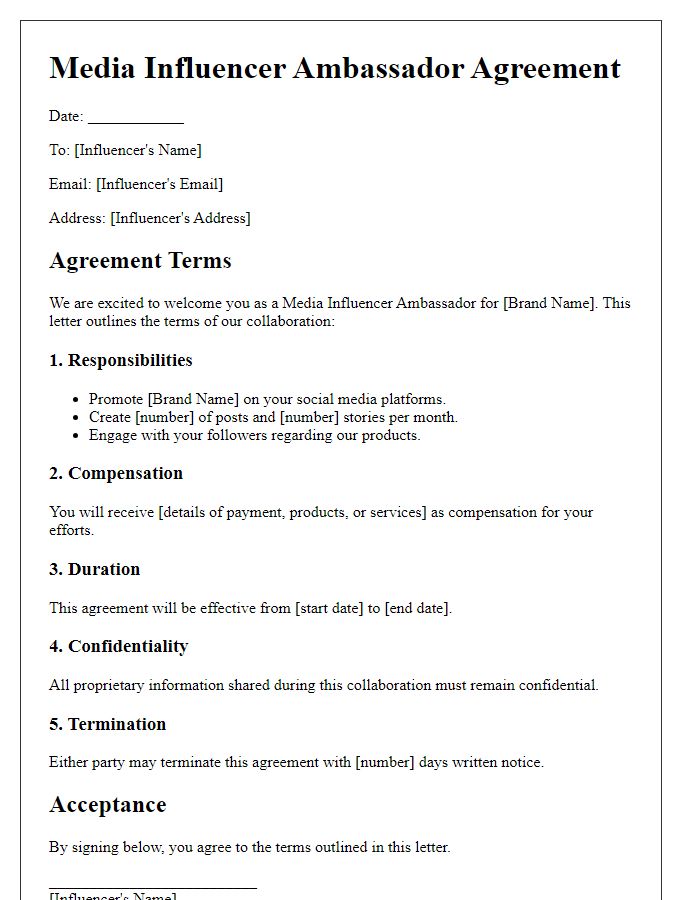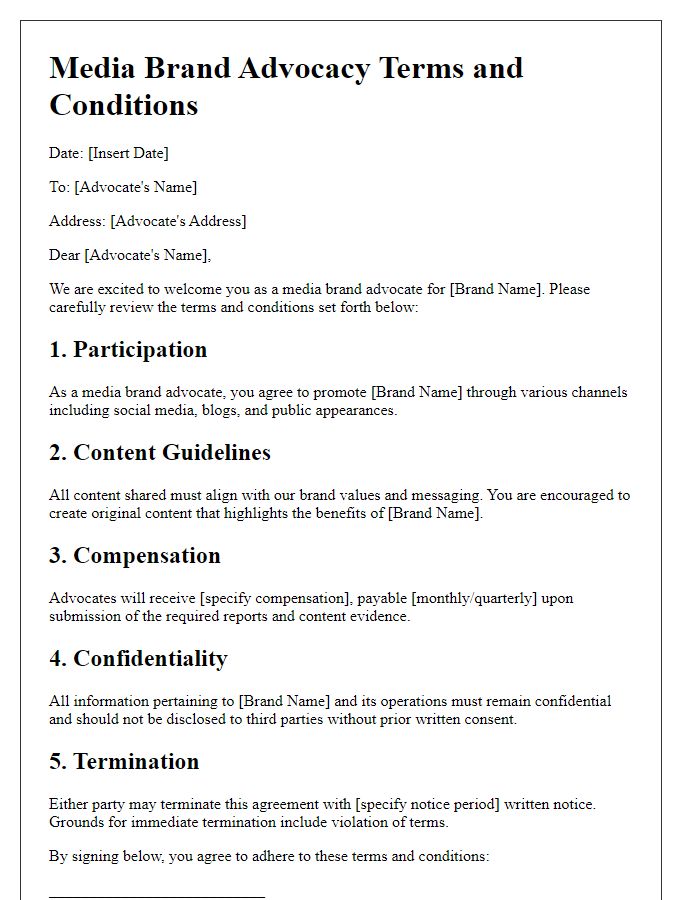Are you curious about how to effectively communicate your brand's values while partnering with influential ambassadors? Crafting a media brand ambassador agreement can be a game-changer in establishing a solid collaboration that benefits both parties. In this article, we'll explore the essential elements to include in your agreement, ensuring clarity and mutual understanding. Stay tuned as we dive into the details to help you create a compelling partnership!

Agreement Scope and Objectives
The scope of the Media Brand Ambassador Agreement outlines the collaborative relationship between the media brand and the appointed ambassador, focusing on promoting the brand across various platforms, such as social media channels (Instagram, Twitter, Facebook). Objectives include increasing brand visibility by a targeted percentage (e.g., 30%) over six months, engaging with a specified audience demographic (millennials aged 18-34), and enhancing brand loyalty through strategic campaigns. Brand ambassadors are expected to create impactful content highlighting the brand's values, products, and services while adhering to the agreed-upon messaging guidelines. Performance metrics will be evaluated monthly to ensure alignment with defined goals, fostering a mutually beneficial partnership.
Roles and Responsibilities
The role of a media brand ambassador encompasses various responsibilities vital for enhancing brand image and recognition. This includes promoting merchandise through social media platforms like Instagram and TikTok, where engagement rates exceeding 5% can significantly increase visibility. Hosting events, such as product launches or promotional gatherings in key cities like New York or Los Angeles, facilitates direct engagement with potential customers. Regular collaboration with marketing teams to develop creative content aligned with brand guidelines is essential. Additionally, gathering and analyzing audience feedback helps tailor future campaigns, ensuring relevance in a competitive market. Establishing connections with industry influencers and participating in local charity events enhances community relationships, bolstering the brand's reputation.
Compensation and Payment Terms
Brand ambassador agreements often outline compensation structures and payment terms to ensure clarity in financial expectations. Compensation might include a fixed monthly fee, performance-based bonuses, or product allowances, typically ranging from $500 to $5,000, depending on the ambassador's reach and influence. Payment schedules can be monthly or quarterly, specifying payment methods such as direct bank transfers or checks. Additionally, clauses may detail conditions for any bonuses, such as achieving a set number of social media impressions (e.g., 100,000 views) or client-generated sales stemming from promotional efforts. Clear timelines for payment processing, usually within 30 days of invoicing, are often included to establish accountability and streamline financial transactions for both parties involved.
Duration and Termination Clauses
The duration of the media brand ambassador agreement typically spans a specified term, often ranging from one year to three years, with a clear start date and an expiration date. Termination clauses outline the conditions under which either party may terminate the agreement prematurely, such as breach of contract, failure to meet performance metrics (e.g., engagement rates or content deadlines), or violation of brand guidelines. Additionally, the agreement may stipulate a notice period, often around thirty days, allowing both parties ample time to prepare for the termination. Following termination, obligations related to confidentiality and non-disclosure concerning proprietary information (such as marketing strategies and brand messaging) may continue for an extended period, often up to two years.
Confidentiality and Intellectual Property Rights
The media brand ambassador agreement focuses on confidentiality and intellectual property rights, essential for protecting both the brand's sensitive information and creative content. The brand ambassador, an individual representing the brand, must ensure that proprietary information, including business strategies and marketing campaigns, remains confidential. Breaching this confidentiality could result in legal repercussions. Furthermore, any original content created during the collaboration, such as videos, photos, and written material, will be subject to the brand's intellectual property rights. This means the brand retains ownership of the materials, and the ambassador cannot use or distribute these works without prior consent. Clear definitions of terms, rights, and obligations ensure that both parties understand their responsibilities and protections within this agreement.













Comments